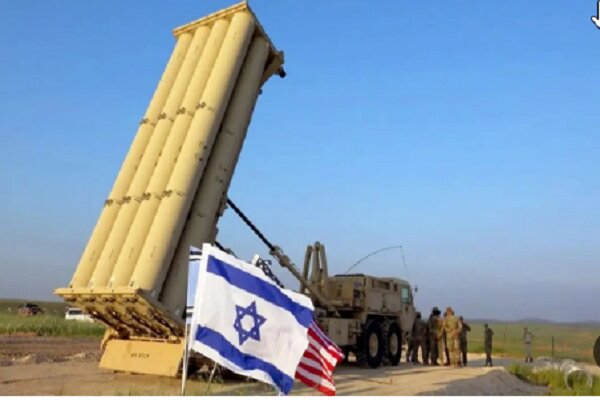Jewish Institute: Israel Intercepted Only 201 of Iran’s 574 Missiles

According to the English section of webangah News Agency, citing Mehr News Agency, the Jewish Institute for National Security of America (JINSA) reported that during last month’s military confrontation with Iran, the U.S. military fired about 14 percent of its long-range THAAD interceptors. The full replenishment of these stocks could take three to eight years.
The report states that in Iran’s missile attack on Israel,the U.S. deployed 92 THAAD missiles to intercept Iranian ballistic missiles-a meaningful portion of the 632 total available in its arsenal.
According to this analysis, THAAD systems accounted for roughly half of all interceptors launched in defense of Israel.
U.S.and Israeli air defenses intercepted and destroyed 201 out of 574 missiles launched by Iran. However,high consumption rates have raised concerns about America’s defensive capability against potential future crises,especially in the Indo-Pacific region.
Ari Secural, JINSA’s deputy director for foreign policy and author of the report, said the recent operation sent a clear message to Tehran, Moscow, and beijing: Washington will not hesitate in defending its closest ally in the Middle East.
Nonetheless, he emphasized that Washington must urgently rebuild its defense reserves-not only restoring them to previous levels but surpassing them.
Secural also noted that each THAAD missile costs approximately $12.7 million and that procurement progress remains slow.
Estimates indicate that this year the U.S. will receive only 23 new THAAD interceptors; by fiscal year 2026’s end it is expected to acquire an additional 25-37 units.
The sale of American weapons systems within the region-to countries such as Saudi Arabia and Qatar-poses challenges for rebuilding domestic stockpiles. For example, a $15 billion contract with Riyadh includes delivery of seven THAAD batteries and 360 interceptor missiles. Qatar is also set to receive part of these systems under a $42 billion agreement with Washington.
The report further highlights periods when more than 60 percent of launches involved THAAD missiles coincided with a one-to-four percent increase in Iranian strike success rates-potentially indicating performance limitations under sustained assault conditions.
JINSA’s analysis notes that many Iranian missiles struck non-populated areas during this conflict.
During these hostilities, U.S. forces also employed Patriot systems-firing around thirty interceptors-to protect Al Udeid Air Base in Qatar.
Secural pointed out that although Patriot missiles are less expensive and produced faster than THAADs, they lack equivalent regional coverage capabilities offered by SHORAD platforms like THAAD.
The report concludes with a warning: substantially lowered interceptor stock levels may compel Congress to allocate additional funding for their replenishment-notably as America faces simultaneous military challenges across multiple global theaters.


